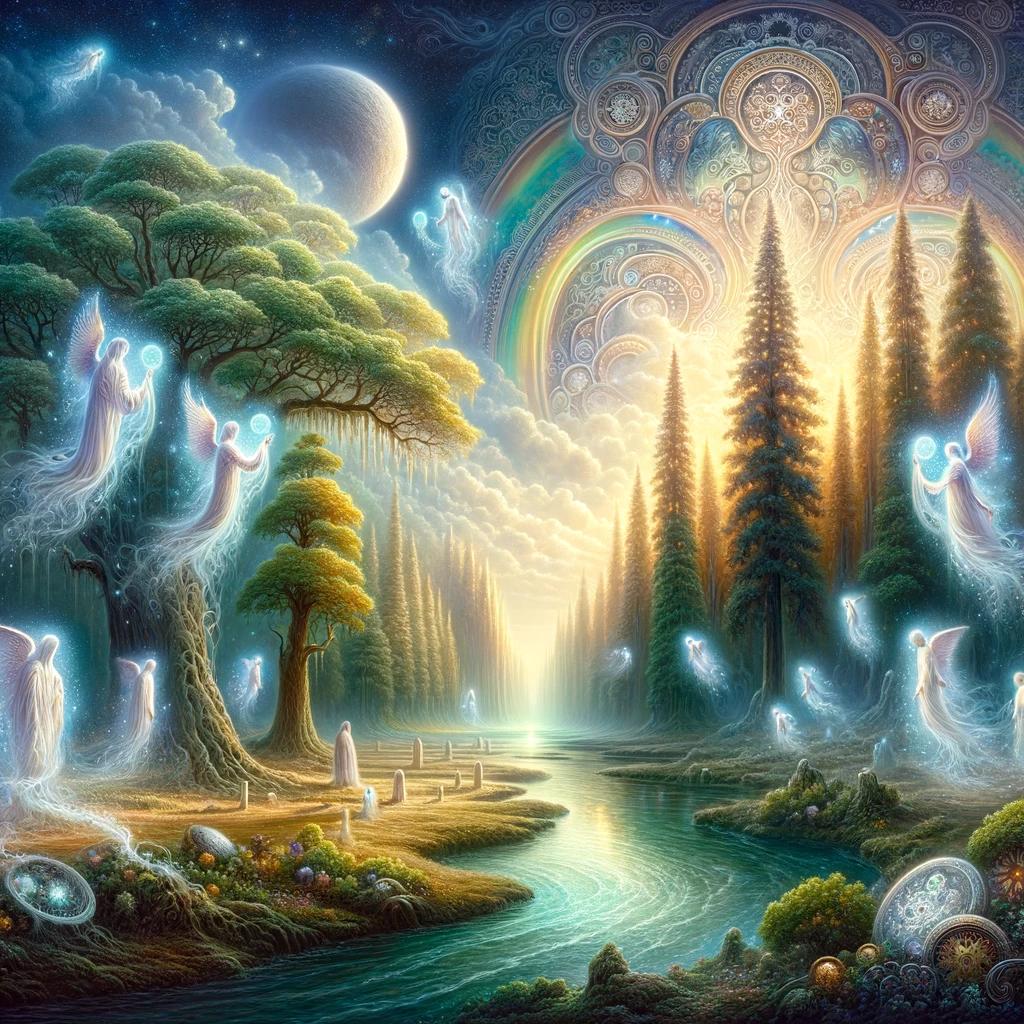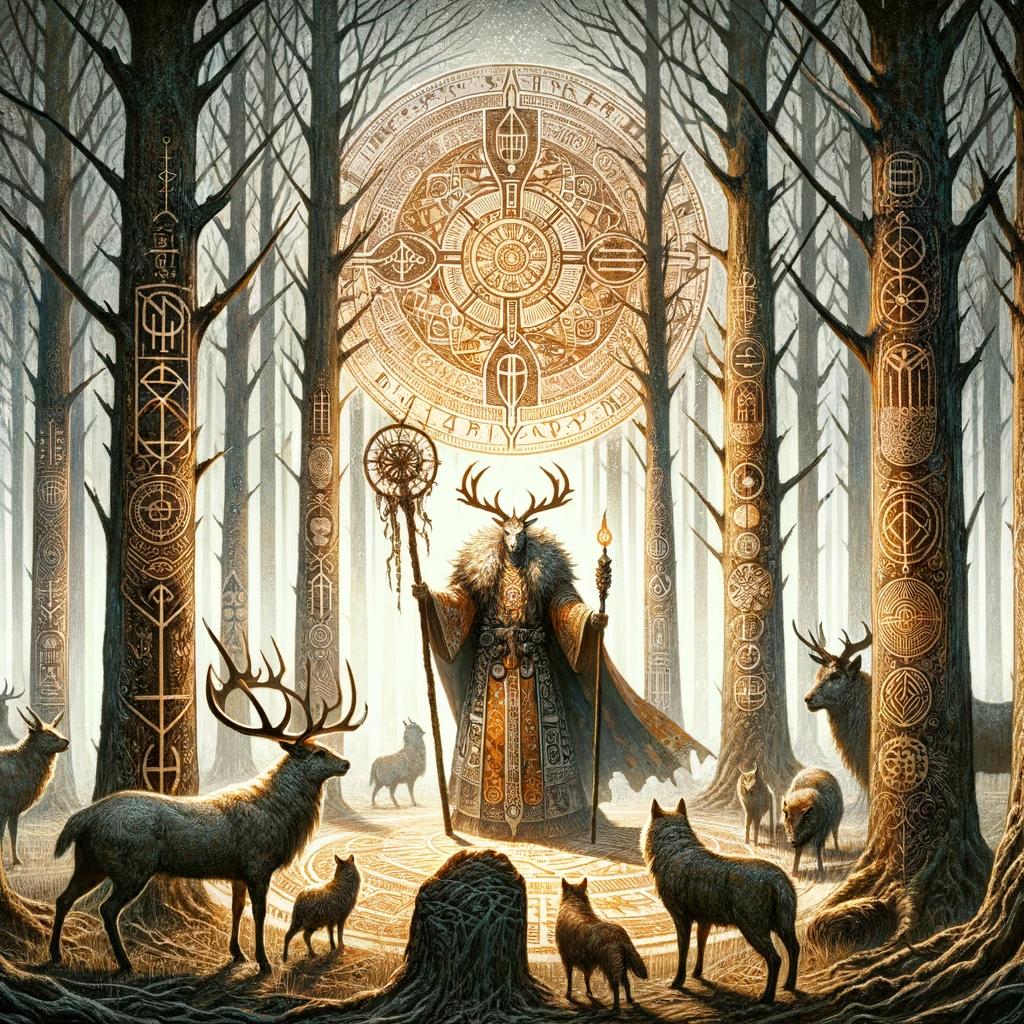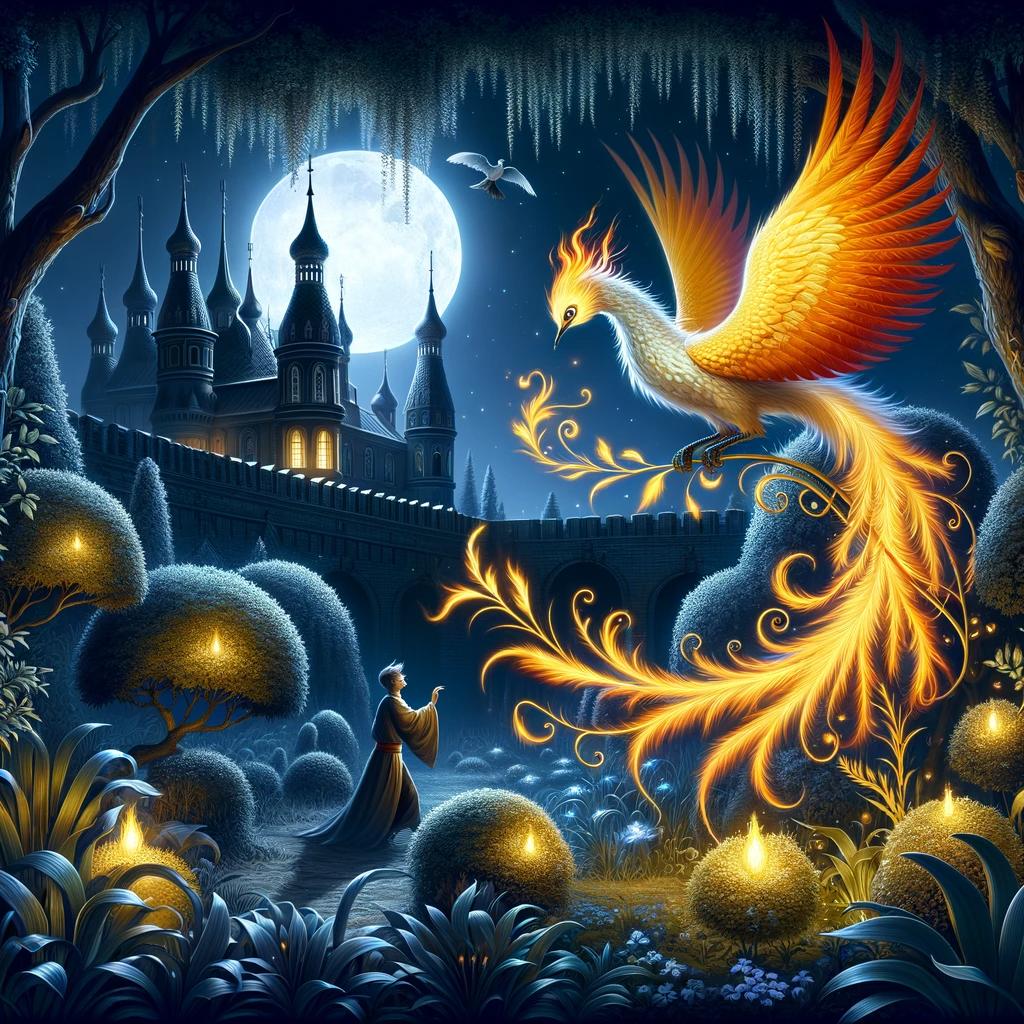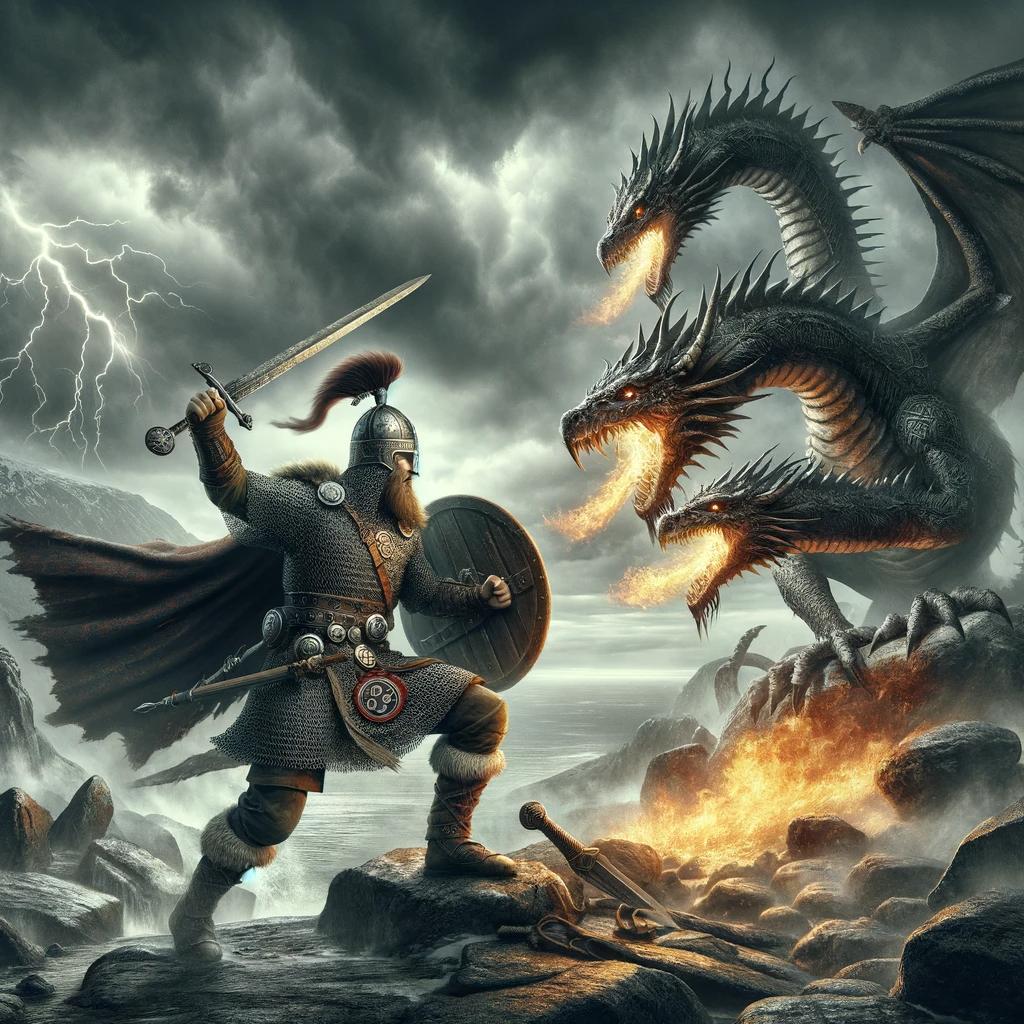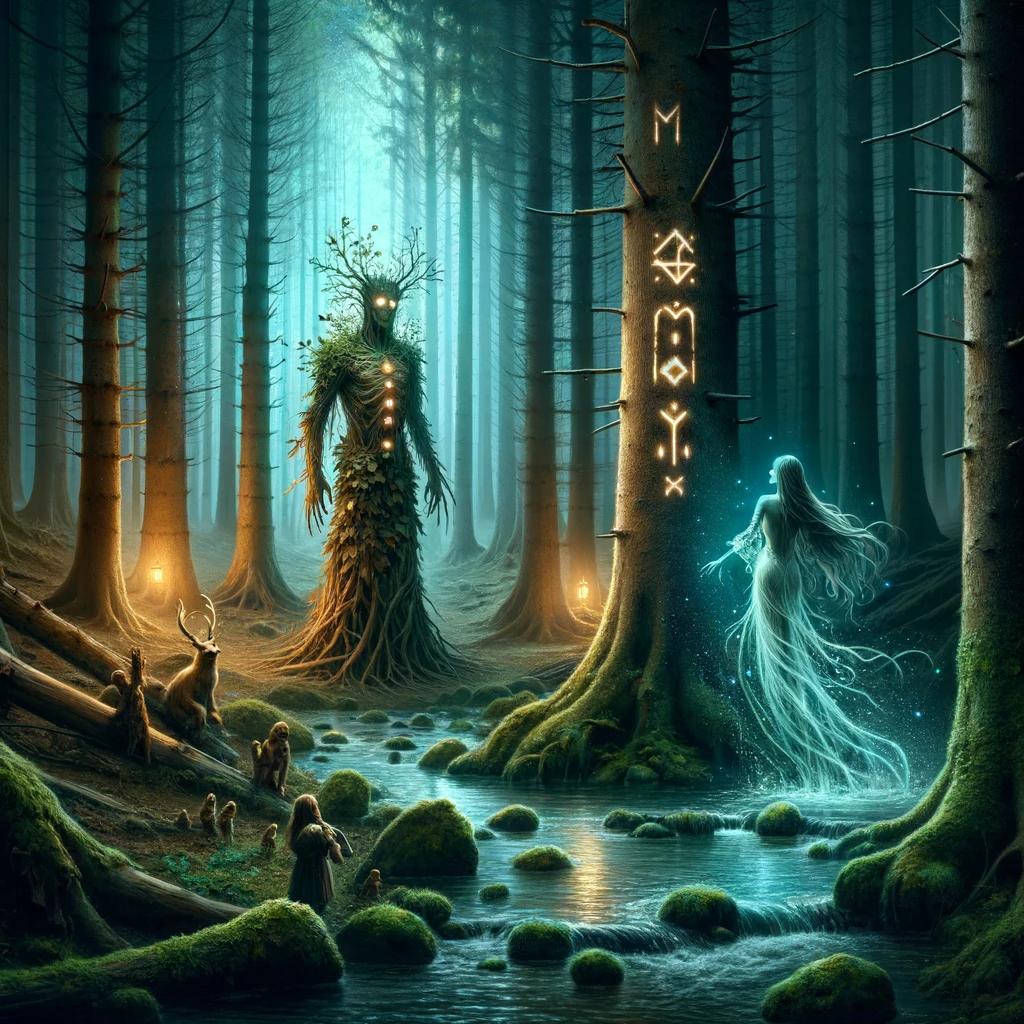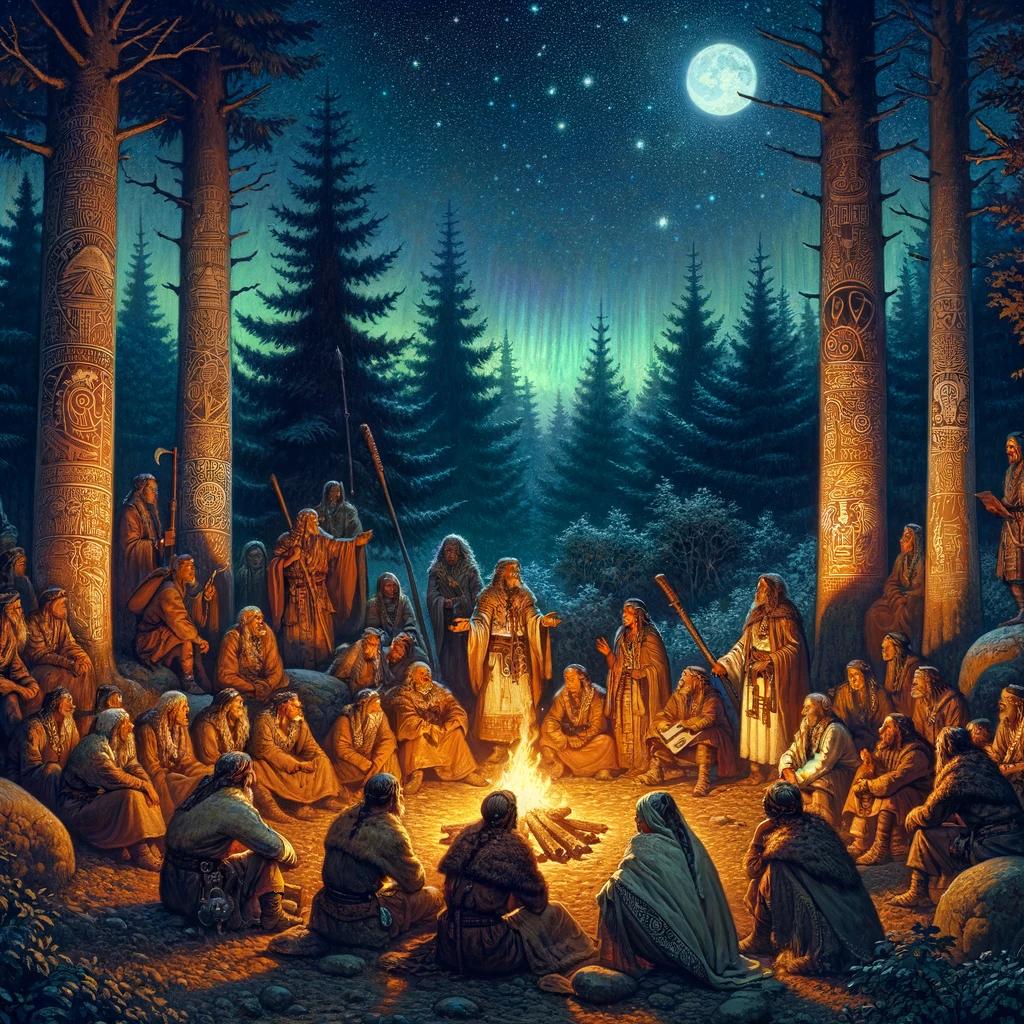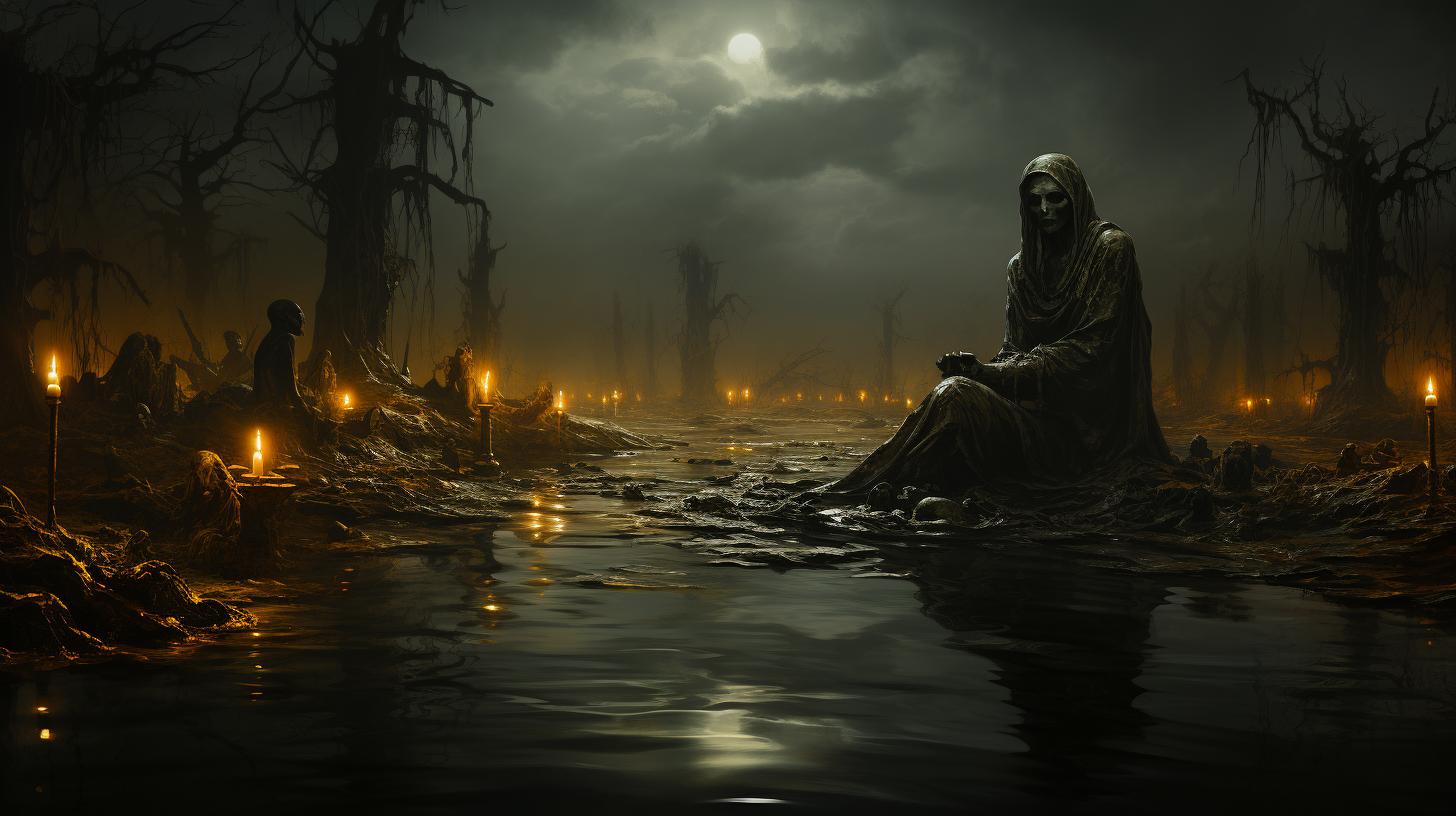Slavic Mythology Afterlife: Journey Beyond Death in Slavic Beliefs
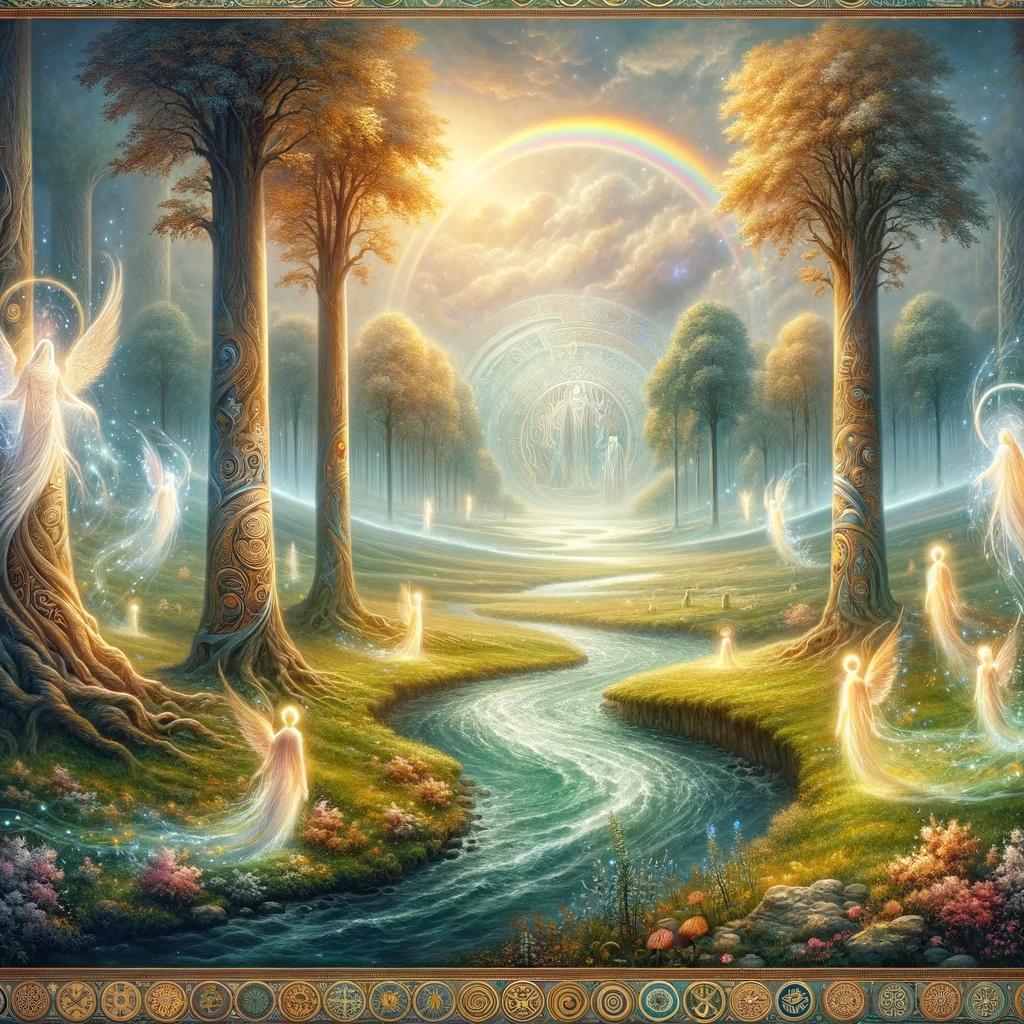
Slavic Mythology Afterlife explores the unique beliefs of ancient Slavs regarding life after death. In their mythology, three realms exist: Prawia, Jawia, and Nawia. Crossing the mystical river known as Smorodina was the journey to the afterlife.
Unlike Greek mythology, there was no guide to assist souls in crossing, and they had to find their own path. Nav, the subterranean realm, housed the souls of the deceased, while Prav was reserved for the righteous.
Baba Yaga guarded the threshold between life and death, while Koschei the Immortal ruled the land of the dead. Reincarnation was believed to bring the souls back to the world of the living.
Overview of Slavic Mythology Afterlife
Welcome to the fascinating realm of Slavic Mythology Afterlife, where ancient beliefs about the world beyond death take center stage. In this overview, we will explore the core principles and concepts that shape Slavic beliefs regarding the afterlife.
Through an exploration of the rich mythological traditions of the Slavic people, we will come to understand the unique and complex perspectives they held on what lies beyond the veil.
Introduction to Slavic Mythology
In this section, we will delve into the origins and overarching themes of Slavic mythology.
From the ancient pagan traditions to the influences of Christianization, we will trace the evolution of the Slavic mythological framework. Through a deep dive into their pantheon of gods, goddesses, and mythical creatures, we will uncover the foundation upon which their beliefs about the afterlife were built.
Beliefs about the Afterlife in Slavic Mythology
Within Slavic mythology, the concept of the afterlife held a central place in the collective mindset. In this section, we will explore the specific beliefs and customs surrounding the journey of the soul after death.
We will dive into the three realms that governed this cosmic landscape: Prawia, Jawia, and Nawia. Discover the contrasting notions of justice, righteousness, and the eternal coexistence of souls and creatures within these realms.
The Three Realms of Slavic Afterlife
The concept of the afterlife in Slavic mythology revolves around three distinct realms that shape the journey of the soul beyond death. These realms include Prawia, Jawia, and Nawia. Each holds its own significance in the Slavic belief system.
Prawia: The Realm of the Gods
Prawia is the realm reserved for the gods and divine beings in Slavic mythology. It is a realm of immense power and eternal existence. Only the most righteous and virtuous souls were believed to have the opportunity to enter Prawia and reside among the gods.
This realm represents the ultimate destination for those who led exemplary lives, rewarded for their moral and just actions.
Jawia: The Realm of the Living
Jawia represents the world of the living, the realm that mortal beings inhabit during their earthly existence. It is a realm of constant change, growth, and experience. In the Slavic afterlife, Jawia acts as an intermediary realm between Prawia and Nawia, where souls navigate their journey towards their ultimate destination.
It is within Jawia that individuals strive to live righteous lives and prepare themselves for the journey ahead.
Nawia: The Realm of the Dead
Nawia is the realm of the dead, where souls go after crossing the mystical river Smorodina. Unlike the Western concept of Heaven and Hell, Nawia is the sole destination for all departed souls in Slavic mythology.
Here, the souls of the deceased coexist with various other creatures and entities. It is a realm with its own mysteries and challenges, where the departed souls continue their existence in a different form.
- A journey through the Slavic afterlife involves traversing the mystical river Smorodina, an equivalent of the Greek River Styx.
- To cross the river, souls must overcome the perilous challenges presented by the fearsome guardian Chudo-Yudo.
- Once across the river, souls enter Nawia, the realm of the dead, where they reside alongside other creatures and entities.
- Prawia, the realm of the gods, is believed to be accessible only to souls who led righteous and just lives.
Crossing the Mystical River: Smorodina
The journey to the afterlife in Slavic mythology involves a significant task – crossing the mystical river known as Smorodina.
This river serves as the Slavic equivalent of the Greek River Styx. It acts as a boundary separating the world of the living from the realm of the dead.
Smorodina: The Slavic River Styx
Smorodina, the Slavic River Styx, holds great symbolism in the mythological beliefs of the ancient Slavs.
It is a mystical and ethereal river that holds immense power over the transition between life and death. In Slavic folklore, this river represents the threshold that souls must cross on their journey beyond mortality.
The Challenges of Crossing the River Smorodina
Crossing the river Smorodina is not a task without its challenges. The souls venturing into the afterlife must face numerous obstacles to traverse this mystical river. The most prominent challenge is the presence of a fearsome creature called Chudo-Yudo, who guards the Kalinov Bridge, the only passage to cross Smorodina.
Only those who prove themselves worthy can successfully pass this perilous stage of their journey.
- The repulsive odor emitted by the river
- The fiery glow of the Kalinov Bridge
- The formidable guardian, Chudo-Yudo
These challenges test the souls’ determination, bravery, and righteousness, making their passage through Smorodina a difficult and arduous process.
The Journey to Nav: Slavic Underworld
The journey to the Slavic underworld, known as Nav, held great significance in ancient Slavic beliefs about the afterlife. This subterranean realm was where the souls of the deceased resided alongside other mystical creatures.
Let’s explore the fascinating aspects of Nav.
Nav: The Subterranean Realm
Nav, the subterranean realm in Slavic mythology, was believed to be the final destination for all souls after death. Unlike the Christian concept of Heaven or Hell, ancient Slavs did not distinguish between such realms.
Instead, they viewed Nav as the only place where the souls could find solace in the afterlife.
In Nav, the souls of the departed were thought to exist in a state of coexistence with various mythical creatures.
It was a realm immersed in captivating lore and mysterious entities, creating a dynamic and complex afterlife landscape.
Coexistence of Souls and Creatures in Nav
Within the realm of Nav, the souls of the departed were not alone. They shared their afterlife existence with a diverse array of mythical creatures, each with its own significance and role.
These creatures included spirits, demons, and other supernatural beings, which added to the intricate fabric of Slavic afterlife cosmology.
- Spirits: Nav was inhabited by spirits that were said to guide and accompany the souls on their journey through the underworld.
These spirits played a crucial role in ensuring the souls’ safe passage and offered them guidance and support.
- Demons: Nav was also home to malevolent demons that posed threats and challenges to the souls.
These demons tested the souls’ resilience and virtue, making the journey through Nav a treacherous one.
- Other Creatures: Various other mythical creatures populated the realm of Nav, such as legendary animals, fantastical beings, and divine entities.
These entities contributed to the rich tapestry of Slavic mythology and added layers of complexity to the afterlife experience.
The coexistence of souls and creatures within Nav created a unique dynamic, shaping the perception of the afterlife in Slavic mythology.
Souls had to navigate through encounters with these beings, facing trials and tribulations to find their rightful place in the realm.
As souls embarked on the journey to Nav, they entered a world that blurred the boundaries between life and death.
It was a realm teeming with mythical beings and enigmatic landscapes, where the destiny of the departed unfolded amidst the wonders and challenges of the Slavic underworld.
Prav: An Exclusive Realm for the Righteous
Prav, one of the three realms in Slavic Mythology Afterlife, was believed to be the dwelling place of the gods.
It was an exclusive realm reserved for the righteous, those who had led a particularly just and virtuous life.
Entrance to Prav: Moral Requirements
To enter Prav, individuals had to meet certain moral requirements. Simply leading a good life was not enough; they had to demonstrate unwavering integrity, fairness, and compassion in their actions and decisions.
The gods judged their overall character and conduct to determine whether they were worthy of entering this esteemed realm.
The attributes valued in Prav included:
- Justice
- Honesty
- Humility
- Generosity
- Mercy
The Role of the Just in Prav
Once admitted into Prav, the righteous individuals enjoyed a privileged existence, basking in the presence of the gods. They had the opportunity to engage in meaningful interactions with the divine beings, seeking their wisdom and guidance for personal enlightenment and growth.
Furthermore, these virtuous souls often played crucial roles as intermediaries between the gods and the mortal realm. They acted as conduits for communication and carried out divine tasks assigned to them, aiding in the maintenance of harmony and balance between the realms.
It was a position of great honor and responsibility, as they represented the epitome of righteousness and served as examples for others to emulate. Their presence in Prav contributed to the overall cosmic order and the well-being of both the mortal and divine worlds.
Baba Yaga: Guardian of the Threshold
Baba Yaga, a prominent figure in Slavic mythology, serves as the guardian between the realms of the living and the dead. She embodies the personification of death and resides in the dark forest.
With her serpentine face and bony leg, Baba Yaga ensures that no living being can cross into the realm of the dead. In fairy tales, heroes face challenges or render services to earn her favor and seek her assistance.
Baba Yaga’s Role in Slavic Afterlife
In Slavic mythology, Baba Yaga acts as the ultimate gatekeeper, determining who can pass through to the afterlife. Her role goes beyond physical boundaries, as she safeguards the transition between mortal existence and the realms beyond.
Baba Yaga embodies the primal force of death and acts as a symbol of the inevitable crossing from the world of the living to the world of the dead. She represents the mystery and uncertainty associated with the afterlife.
Overcoming Challenges to Seek Baba Yaga’s Assistance
According to folktales, those seeking Baba Yaga’s assistance must confront and overcome various challenges. She sets tasks and tests for those who venture into her domain, requiring the heroes to prove their wit, courage, and resourcefulness.
These challenges might involve completing impossible tasks, solving riddles, or demonstrating exceptional bravery. Only those who pass her tests gain access to her wisdom and aid.
- Aptitude for problem-solving
- Demonstration of courage
- Resourcefulness and adaptability
- Proving oneself through trials
- Maintaining composure and perseverance
- Showing respect and humility
These qualities are essential to gain Baba Yaga’s assistance, as she values those who possess the attributes necessary to face the challenges encountered on the path to the afterlife.
It is through bravery, cunning, and determination that individuals can seek her favor and secure her support.
Koschei the Immortal: Ruler of the Dead
Koschei the Immortal is a prominent figure in Slavic mythology, known for his dominion over the realm of the dead. Legends and stories about Koschei captivate the imagination, revealing the power and mystery surrounding this immortal ruler.
Legends and Stories of Koschei
In Slavic folklore, Koschei the Immortal is depicted as a malevolent and cunning character. He is often portrayed as an evil sorcerer who possesses eternal life, making him an intimidating and formidable figure in the afterlife.
According to various tales, Koschei’s immortality stems from a hidden object or creature that contains his soul. It could be a needle in an egg, a duck in a well, or a secret location only known to him.
As long as this object or creature remains intact, Koschei cannot be destroyed.
Heroes and adventurers in Slavic myths often undertake quests to find and free Koschei’s soul, hoping to put an end to his reign of terror.
These tales showcase the courage and determination required to challenge the power of the ruler of the dead.
Koschei’s Dominion in the Land of the Dead
As the ruler of the dead, Koschei oversees Nav, the subterranean realm where souls reside after crossing the river Smorodina. In this mysterious underworld, he commands an army of spirits and dark entities, ensuring order and enforcing his rule.
The land of the dead is believed to be a realm of perpetual darkness, where souls exist in a state between life and death. Koschei’s dominion over this realm grants him immense power and control, allowing him to manipulate and influence the souls within.
Legends suggest that those who dare to challenge Koschei’s authority must face unimaginable trials and tests. Only the most courageous and resourceful individuals can hope to overcome these obstacles and disrupt Koschei’s hold on the land of the dead.
Throughout Slavic mythology, Koschei the Immortal stands as a symbol of the eternal struggle between life and death. His presence in the afterlife embodies the hardships and dangers that souls must face on their journey beyond mortal existence.
Return to the World of the Living
Once existing in the realm of the dead, Slavic mythology held the belief in the possibility of returning to the world of the living. This concept was deeply rooted in the notions of reincarnation and the cycle of souls.
Reincarnation and Rebirth in Slavic Beliefs
Reincarnation played a significant role in Slavic mythology afterlife. It was believed that the souls of the deceased could be reborn into new bodies, either as descendants or as animals.
This cycle of rebirth brought the departed souls back to the realm of the living, giving them another chance to experience mortal existence.
The process of reincarnation was not a random occurrence but rather governed by a cosmic balance and justice.
The souls that had lived righteous lives and followed the moral principles were more likely to be reborn into favorable circumstances, while those who had led dishonorable lives might face challenges and adversity in their subsequent lives.
The Cycle of Souls in Slavic Mythology
Slavic mythology envisioned a continuous cycle of souls, where the departed would pass from the realm of the living to the realm of the dead and eventually return to the world of the living.
This cyclical nature reflected the interconnectedness of life and death.
As souls journeyed through Nav, the subterranean realm, and experienced the existence in the afterlife, they carried the memories and experiences of their previous lives.
Upon their return, these memories might manifest through dreams or a sense of déjà vu, connecting the present life with their past existence.
The cycle of souls reinforced the idea that death was not the ultimate end but a transition into a different state of being.
It provided hope that one could learn from past mistakes and continue to evolve through successive lifetimes.
- The realm of the dead, Nav, served as a temporary stop on the souls’ journey, allowing them to rest and reflect before embarking on another life.
- Reincarnation offered the opportunity for personal growth and spiritual evolution, as each lifetime presented new lessons and challenges to overcome.
- The cyclical nature of the afterlife emphasized the interconnectedness of all living beings and the continuous cycle of existence.
In conclusion, Slavic mythology afterlife encompassed the belief in the return to the world of the living through the concepts of reincarnation and the cycle of souls.
Departed souls had the possibility of being reborn and experiencing mortal life once again, carrying with them the wisdom gained from previous existences. This cyclical nature reinforced the interconnectedness of life and death and offered the prospect of continued personal growth and evolution.
.

